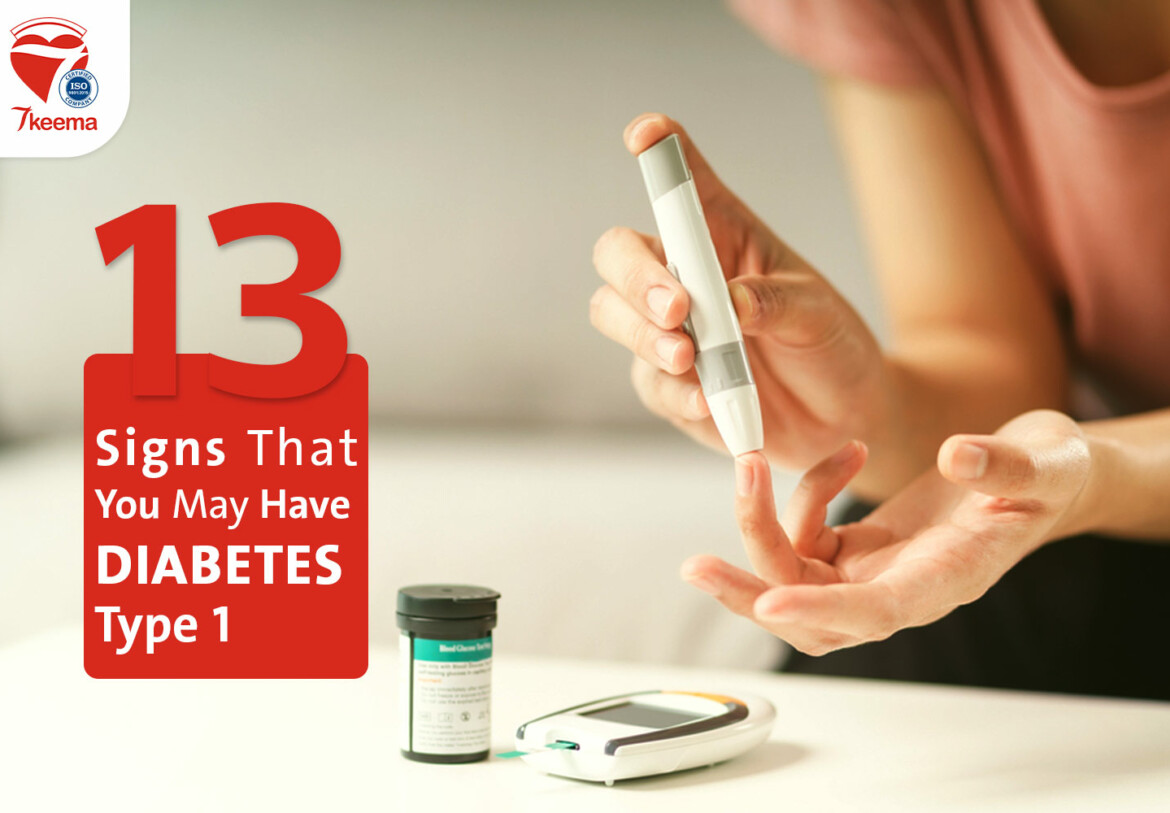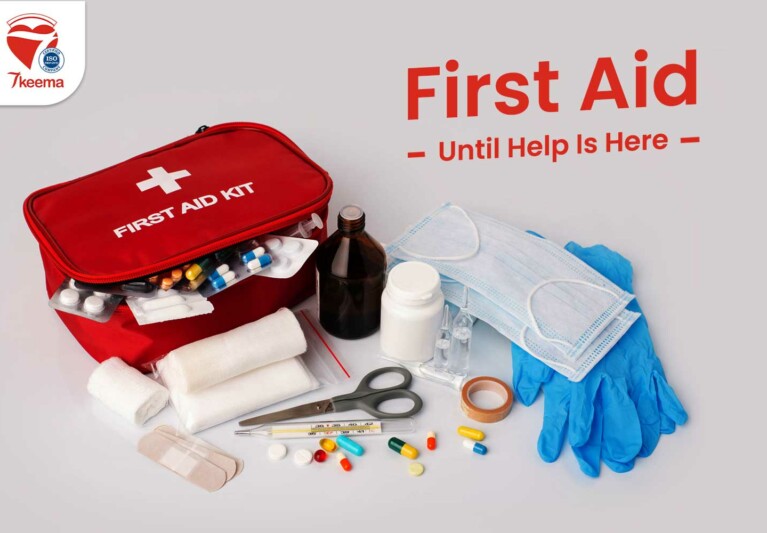You wake up early every day doing your basic routine, such as having breakfast, getting ready for hanging out, or going to work. You may choose not to walk today, or delay the running for tomorrow.
Doing shopping and some other stuff just like every day, your daily routine that you do over and over again on daily bases. But it won’t come up to your mind that your daily routine will be the reason that you may diagnose with diabetes.
Today, we will talk about this disease, especially diabetes type 1 and we will answer questions that may come up to your mind mentioning the difference between diabetes type 1 and type 2.

What is Diabetes?
It is one of the recent most common 5 diseases in the world, which is a hormone disorder. By attacking the pancreas cells, the amount of insulin produced by the body will consequently decrease.
When food is digested and enters your bloodstream, insulin moves glucose out of the blood and into cells, where it’s broken down to produce energy. However, if you have diabetes, your body is unable to break down glucose into energy. This is because there’s either not enough insulin to move the glucose, or the insulin produced does not work correctly.
How to know you are diagnosed with it?
This disease is not a new one to society, it was known long decades ago, there is more than one symptom to understand when you are diagnosed with it.
Diabetes Types:
Diabetes type 1
Diabetes type 2
Gestational diabetes (While Pregnancy)

Diabetes Symptoms:
Diabetes type 1 and type 2 are common at some points or symptoms, we will mention them:
-Extreme thirst
-Hunger frequently throughout the day.
-Difficulty healing wounds
-Physical exhaustion in large measure.
-In this article, we will shed more light on diabetes type 1, its symptoms, its causes, and talk in detail about all that matters for diabetes type 1.
What is diabetes type 1?
Diabetes Type 1 was previously called youth diabetes because of its significant occurrence in childhood, adolescence, or youth.
Diabetes Type 1 affects 8% to 10% of diabetics, while type 2 affects 90%.
The two types are similar in many of the symptoms and causes but there are also differences that we can mention, such as the infection rate as we mentioned earlier.
In addition, diabetes type 1 affects children and young people more. It is a sudden human condition that gradually worsens the condition of type 1 diabetics, such as high and low sugar levels, which are acute and frequent.

Diabetes type 1 symptoms:
Thirst:
Diabetes type 1 patient experiences permanent thirst as a result of high blood sugar levels, which causes the body to get to its normal state, which makes it require more water. In addition, high blood sugar decreases the kidney’s ability to reserve sugar and thus loses urine, which makes the body in dire need of water and fluid.
There are some guidelines for avoiding the problem of severe thirst throughout the day, such as:
-The level or percentage of blood sugar is normal in the blood: 120.
-Drinking sufficient quantities of water throughout the day.
-Eating fruits and vegetables rich in fiber, such as carrots and cucumbers, because they reduce high blood sugar.

Urination:
As a result of high blood sugar, the body needs to get rid of glucose through urine. There are several reasons for high urination in diabetics, including:
-Dialysis
-Liver failure
-Pregnancy
-take some medication
-excessive bladder activity
-Urinary incontinence
-bladder infections
-High calcium levels in the blood
-Chronic diarrhea.
Some advice to take care of chronic diarrhea:
-Fibers intake, reducing blood sugar in blood stream, and thus reduces the body’s desire to eliminate glucose.
-Reduce carbohydrate intake.
-Reduce the intake of sugars.
-Increase the practice of yoga and relaxation exercises, which can make the body absorb glucose better for better energy.
-Check blood sugar regularly (normal level is 120.)
-Taking medicines and insulin injections.
But some diabetics with type 1 might develop worse than the idea of urinating over the day, and some symptoms like:
-Urinary blood
-Hard urination
-Micturition reflex
-Dark urine
-In such cases, diabetics should visit the doctor to follow up on the consequences.

Severe hunger during the day:
Diabetics type 1&2 feel hungry because of 2 reasons:
-blood sugar disorder
-glucose can’t permeate body cells
as a result of those 2 points, the body can’t convert food into energy for the body to benefit from, and the lack of energy leads to frequent hunger in diabetic patients.
How do we prevent or decrease repeated hunger?
To decrease it, you have to follow some instructions:
-Exercising regularly
-Divide the day’s meals into short meals
-Eat fiber
-Drink water
Losing weight:
Diabetes type 1 & 2 causes weight-loss because glucose can’t be used in a good way to give the body enough energy, especially in diabetes type 1. After all, the body stops producing insulin which leads the body to burn out the inner fats so diabetics get thinner.
Feeling Exhausted:
Diabetics with type 1 feel exhausted due to:
-Changes in blood sugar level.
-Complications of diabetic patients
-Excessive weight gain or loss.
When the cells don’t get enough glucose, the patient may feel tired, and yet medications can help move glucose into the cells and prevent them from rising to harmful levels in the blood.
Diabetes medications can cause side effects that lead to a drop in blood sugar levels that could make the patient feels tired.

Vision Problems:
It may cause some damage to diabetics, even diabetes type 1, and these damages may cause damage to some blood vessels in the retina, which is called (diabetic retinopathy), which could lead sometimes blindness diabetics, and increases the possibility of eye glaucoma.
Facing some obstacles in wound care:
Diabetics type 1 face some obstacles in wound care due to some issues including nerve damage, poor blood circulation, cell dysfunction, and others. Hence, we can list some of the reasons that make it difficult to heal wounds during diabetes:
White blood cells function weakness:
Persistently high blood glucose leads to reduced functionality of white blood cells that are a cornerstone of the immune process or the immune system, so this malfunctioning of white blood cells causes trouble while fighting bacteria or healing wounds.
Poor blood circulation:
Due to diabetes, the blood moves slower in the body as a result of its viscosity, leading to a defect in the functions of red blood cells, which in turn cannot deliver nutrients to the body or wounds, which leads to slow healing of wounds.
Side effects that affect nerves:
High blood sugar leads to nerve damage, and this causes a lack of feeling in the affected area, which leads to the wounds not healing well, and decreased feeling in the affected area increases the risk of infection, in addition to some factors that increase the risk of wound infection or the lack of wound healing, which can be mentioned as follows:
-Decreased sweating.
-Weakness of the skin barrier.
-Dryness and cracking of the skin.
-Decreased certain hormones such as growth hormone and healing.
-Low collagen level in the body as a result of diabetes type 1.

There are some tips that type 1 diabetics should follow to help them heal wounds faster:
Regular examinations of the body to ensure that there are no new wounds, especially in the feet or toes.
Sterilize wounds and take care of them so that the wound does not get infected or pus, causing another wound or a slower healing process.
Cleaning the wound and getting rid of dead tissue, as it could lead to bacteria formation and then infection.
Change dressings regularly: changing them helps keep the wound clean and moist to help speed healing.
There are some ways that diabetics can decrease wounds:
-Check the blood sugar rate continuously at 120.
-Trying to avoid shallow or deep wounds, especially in the foot.
-Quit smoking.
-A healthy diet.
-Exercise more regularly.
What are the complications of diabetes?
Infected diabetic wounds can cause some tissue-specific complications, and in more serious cases at the stage of diabetes, the infection is transmitted in the body, which can cause:
-Retinal injury.
-Kidney diseases
-Heart disease
-gangrene
-amputation
Gums, bladder, or skin:
It causes problems or weaknesses in the immune system which increase the likelihood of contracting urinary tract infections.
General bodily fatigue:
Because blood sugar has changed dramatically at close intervals, diabetes type 1 causes a small amount of insulin to be produced – sometimes not at all.

Stomach disorders:
Diabetes Type 1 and 2 would lead the patient to suffer from stomach disorders such that the stomach needs to empty its contents due to damage to the stomach’s nearby nerves. Some symptoms of stomach disorders can be mentioned, such as:
-Vomiting undigested foods.
-Weight loss.
-Inflate the stomach.
-The constant change in blood sugar levels.
-A sense of permanent hunger.
-Food back in the esophagus.
-Weak appetite.
-Stomach wall spasms.
Difficulty breathing:
It can cause injury to many parts of the body, including the evolution of the patient’s condition and difficulty breathing because of the lack of production of insulin and glucose. The body does not feel the presence of energy, which causes the body fat to break to saturate it with energy.
oral dryness:
Diabetes type 1&2 causes oral dehydration due to things like high blood sugar, which also causes:
-Increased thirst.
-A feeling of burning in the mouth.
-Difficulty swallowing.

Mood Changing:
And depression, so you have to consider some things after you’ve been diagnosed with diabetes, like:
-A healthy diet.
-Check the correct blood sugar level.
-Exercise that helps blood flow faster in the body.
-Avoid smoking.
-Avoid stress.
These are the most prominent symptoms of type 1 diabetes, which, as we mentioned earlier, affects young people, adolescents, and children.
The difference between diabetes type 1&2:
The two types can be similar in some respects, such as symptoms, but there are also differences in the causes and the most susceptible. So let’s talk a little bit more about these differences and start with:
Children, adolescents, and youth are the most likely to be affected by type I diabetes, while type II is more likely to be affected by adult-onset, but children can be affected by type II, due to notably overweight.
The incidence of type I diabetes is 8% of the total diabetics, while type 2 is about 90%.

The causes of type I diabetes are internal to the body or hereditary, such as:
Genetic with diabetes.
Genetic differences cause some hormones to fail and release the hormone insulin into the body.
Some diseases, such as cystic fibrosis, are affected.
Contracting viral infections such as mumps.
Diabetes Type 2 has different causes, such as:
-Smoking.
-Eating a very unhealthy diet.
–Obesity and overweight.
-A family member has had type II diabetes before.
-No exercise or sports activity.
We can also mention some differences between the two in terms of treatment methods:
The first type destroys the pancreatic cells, which causes the body not to secrete insulin. Therefore, the person with the first type of insulin goes for repeated injections for life. But for the second type, the person does not need this much insulin at first, and he may need it later.
As for the prevention of the first and second types, the first type cannot be prevented because, as we mentioned before, it is related to genetic or heritage causes, but the second type can be prevented through exercise, and a healthy diet.
And after all this information, you might wonder, can we cure type 1 diabetes?
We can say that after all these years, with all this scientific, medical, and health development around the world, no cure has been discovered yet, the focus is on maintaining blood sugar.

: Reference
https://www.nhs.uk/conditions/type-1-diabetes/about-type-1-diabetes/what-is-type-1-diabetes/
https://www.diabetes.org.uk/diabetes-the-basics/differences-between-type-1-and-type-2-diabetes




